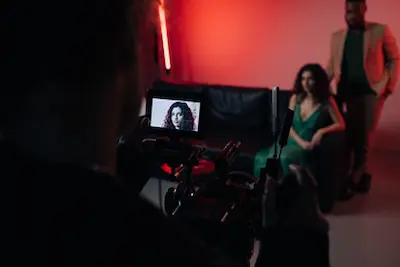Have you ever noticed how certain ads stick in your mind long after you’ve seen them? There’s a good chance those were video ads. Nowadays, video content has become an essential tool for brands looking to make a lasting impression.
Whether it’s a catch TV commercial, a viral media clip, or an engaging product demo, video has a unique way of capturing the audience’s attention and lingering in their minds.
But why is video content so effective for brand recall? And how can businesses harness its power to stand out in a crowded marketplace?
This article will answer all your questions. It discusses how videos engage your senses, tell compelling stories, and leave lasting impressions. Read on!

Understanding Psychological Mechanisms Behind Video Content
People’s brain loves video content, and for good reason. When you watch a video, your mind processes the visual information fast. You see the images, hear sounds, and feel emotions all at once. This multi-sensory experience helps you remember what you watched far better than if you were to read about it.
Take learning a new skill, for example. You might struggle to follow instructions, but watching someone demonstrate the technique makes it click right away. Videos break down complex ideas into bite-sized pieces, making them easier for you to understand and remember.
Videos also feel more personal, as if a friend is explaining something directly to you. This familiar tone makes customers more likely to engage with the content and share it with others. That’s why YouTube ads can be so effective—they leverage this personal feel to capture your viewers’ attention even when they’re not actively seeking out branded content.
The Role of Video Content in Brand Recall
Here’s is the breakdown of the roles of video content in brand recall and reasons why every marketer should implement it:

Emotional Engagement and Storytelling
One of the key advantages of video content is its ability to evoke emotions. When you watch a video that tugs at your feelings or makes you laugh out loud, you’re viewing and experiencing. These emotional moments stick with you, etching the content into your memory.
Think about a time a short film moved you, or clever ads made you chuckle. Chances are you still remember the message behind it clearly. That’s the power of emotional engagement through video content.
Storytelling in videos goes beyond just selling a product. It invites your target market into a world where they can see themselves using that product or service. A compelling video narrative transforms a brand from just another option on the shelf to something that feels like a part of your life.
By weaving relatable tales, brands can create an emotional connection that resonates with their target market on a personal level. This emotional bond makes the message more memorable and meaningful, turning viewers from casual spectators to potential loyal customers.
Visual and Auditory Cues
Videos engage both your eyes and ears, creating a powerful marketing tool. When you watch a video, your brain processes a wealth of information simultaneously.
Picture a vibrant commercial with a catchy jingle. The colors and images grab your attention while the tune sticks in your head. This combination creates a lasting impression, making it easier for you to remember the product later.
Visual elements like logos and color schemes become instant identifiers. A specific shade might remind you of your go-to soft drink, while a unique symbol could evoke thoughts of your favorite tech products. Pair these visuals with distinctive sounds—a catchy melody or a recognizable voice—and you have a recipe for strong brand recall.
Enhanced Engagement and Sharing
When your target audience watches a short clip on social media platforms like Instagram or TikTok, they’re more likely to interact with it. They may leave a comment, hit that like button, or share it with friends. This active participation creates a deeper connection with your content and the brand behind it.
Consider a compelling product demonstration video you recently watched. It may have showcased a kitchen gadget that solved a problem you didn’t even know you had. You might have clicked through to learn more or even bookmarked the page for later. Such levels of engagement are an active step toward a possible purchase.
Videos also foster a sense of community. When someone comments on your video, they’re joining a conversation with other viewers. This interaction makes them feel more connected to the content and the brand, increasing the likelihood they’ll remember it later.
Versatility and Adaptability
Viewers encounter different types of videos throughout their day, all designed to fit their habits and preferences. This adaptability is what makes video content reliable and effective.
While scrolling through your phone, you might catch a quick 15-second clip that grabs your attention. These bit-sized videos cater to your on-the-go lifestyle, delivering punchy messages or entertaining snippets that stick in your mind.
Later, when you have more time, you might settle in to watch a longer video on your favorite streaming platform. Here, you can explore topics that interest you, whether it’s a detailed product review or an engaging brand story.
This flexibility allows content creators to reach their audience wherever they are, with a format that suits their current mood and available time. A makeup brand, for example, may catch your eye with a quick tutorial on your social feed and then draw you in with a more in-depth skincare routine video on their website.

Measurability and Optimization
You might not realize it, but your brand’s video content isn’t just entertaining viewers; it’s generating valuable data. Every view, like, and share provides valuable insight into consumer behavior and preferences.
Consider a product launch video you recently released. By analyzing metrics like view duration, click-through rates, and engagement levels, you can gauge its effectiveness in capturing customer engagement and driving action.
These insights allow you to refine your video strategy. You might experiment with different video lengths, storytelling approaches, or call-to-action placements. For instance, if data shows viewers tend to drop off after 60 seconds, you could create a more concise version of your content.
This data-driven approach leads to continuous improvement. Over time, you’ll develop a clearer picture of what resonates with your audience, allowing you to create more engaging and memorable content.
Remember, each interaction with your videos is an opportunity to learn and optimize. By leveraging these insights, you can craft video content that captures attention, leads to a high brand recall, and drives conversions.
Conclusion
Video content has emerged as a formidable tool in the marketer’s arsenal, uniquely positioned to boost brand recall. Its ability to engage multiple senses, tell compelling stories, and adapt to various platforms makes it an invaluable asset.
By understanding and harnessing the power of video content, brands can create memorable, engaging, and impactful content that resonates with their audience and drives brand recall. As technology continues to evolve, the potential for video content to generate high recall will also grow, solidifying its place as a cornerstone of modern brand strategy.